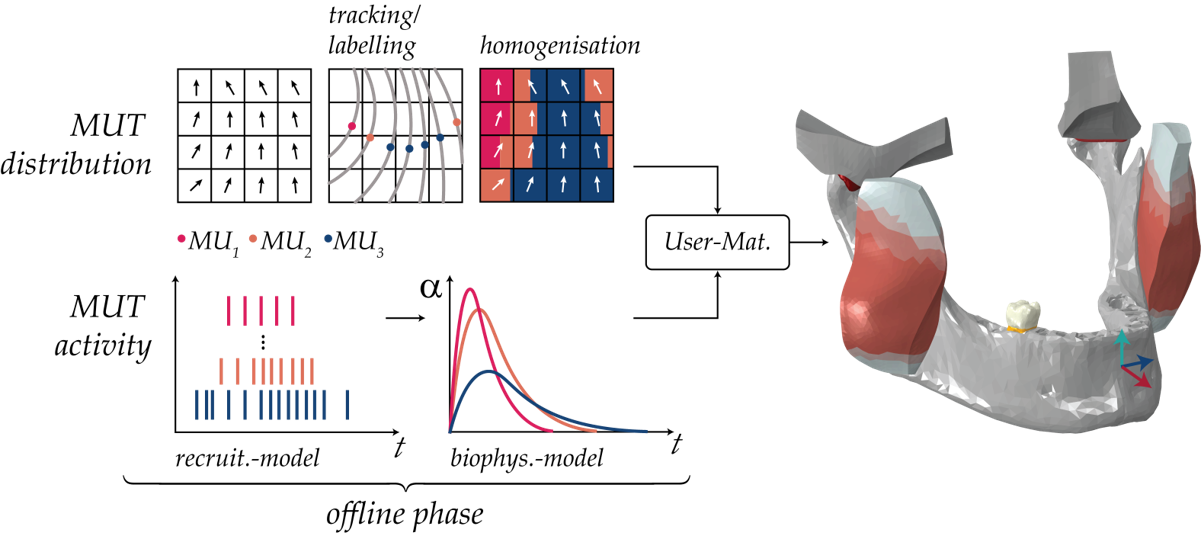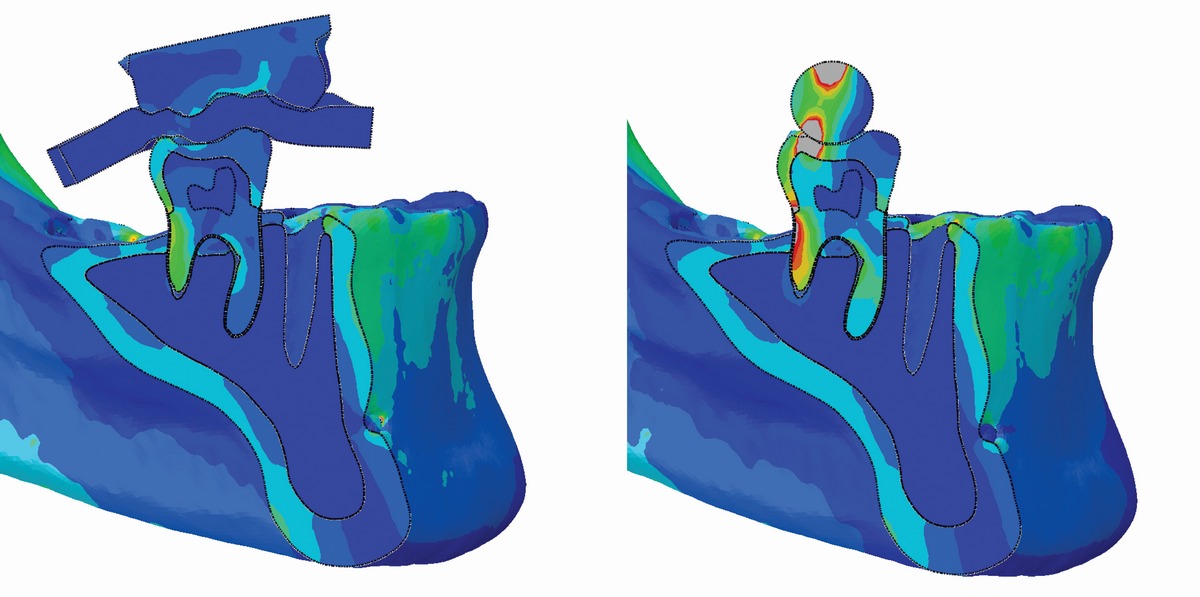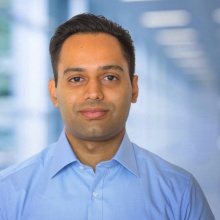Contact
Pfaffenwaldring 4f
70569 Stuttgart
Deutschland
Room: 00.005
Subject
Neuromuscular Modelling
This research focuses on the use of integrated neuromuscular and musculoskeletal models to shed light on the relationships between neural-recruitment, muscle-contraction dynamics, motor-output and joint-kinemations. Such neuro-musculoskeletal models can be used to, e.g., predict the task-specificity of muscles or predict the functional impact of ageing and neuromuscular disorders. These models can uncover underlying physiological phenomena and have the potential to improve our understanding of structure-function relationships and generate new clinical tools. For example, in cerebral palsy, altered neuromuscular- tissue properties, anatomy, and recruitment strategies lead to pathological gait, which is often treated via tendon length alteration. Only by taking all these factors into account, can a computer model make realistic predictions of a “virtual surgery”, and thus aid in the medical intervention.

Work-flow to integrate microscale neuromuscular physiology into a macroscopic model of the musculoskeletal system. MU: motor-unit, MUT: MU territory.
Dental Biomechanics
The proper and healthy functioning of the masticatory system is vital to quality of life. The use of detailed, 3D, anatomically realistic virtual environments can aid in diagnosing and/or improving masticatory system performance, e.g., by prototyping dental implants and illumination structure-function relationships.

Comparison of stress distributions in the molar and surrounding dental structures when subject to different occlusal loads. From Saini et al. (2020).
2020
- Walter, J. R., Saini, H., Maier, B., Mostashiri, N., Aguayo, J. L., Zarshenas, H., Hinze, C., Shuva, S., Köhler, J., Sahrmann, A. S., Chang, C., Csiszar, A., Galliani, S., Cheng, L. K., & Röhrle, O. (2020). Comparative Study of a Biomechanical Model-based and Black-box Approach for Subject-Specific Movement Prediction. 2020 42nd Annual International Conference of the IEEE Engineering in Medicine & Biology Society (EMBC), 4775--4778. https://doi.org/10.1109/EMBC44109.2020.9176600
- Saini, H., Ackland, D. C., Gong, L., Cheng, L. K., & Röhrle, O. (2020). Occlusal load modelling significantly impacts the predicted tooth stress response during biting: a simulation study. Computer Methods in Biomechanics and Biomedical Engineering, 1--10. https://doi.org/10.1080/10255842.2020.1711886
2018
- Saini, H., Altan, E., Ramasamy, E., Klotz, T., Gizzi, L., & Röhrle, O. (2018). Predicting Skeletal Muscle Force from Motor-Unit Activity using a 3D FE Model. PAMM, 18(1), Article 1.
- Röhrle, O., Saini, H., Lee, P. V., & Ackland, D. C. (2018). A novel computational method to determine subject-specific bite force and occlusal loading during mastication. Computer Methods in Biomechanics and Biomedical Engineering, 21(6), Article 6. https://doi.org/10.1080/10255842.2018.1479744
- Roehrle, O., Saini, H., & Ackland, D. C. (2018). Occlusal loading during biting from an experimental and simulation point of view. Dental Materials, 34(1), Article 1. https://doi.org/10.1016/j.dental.2017.09.005
2010
- Pau, J. W., Saini, H., Xie, S. S., Pullan, A. J., & Mallinson, G. (2010). An EMG-driven neuromuscular interface for human elbow joint. 2010 3rd IEEE RAS & EMBS International Conference on Biomedical Robotics and Biomechatronics, 156--161. https://doi.org/10.1109/BIOROB.2010.5627758
2009
- Saini, H., Wadell, J., Pullan, A., & Röhrle, O. (2009). Automatically generating subject-specific functional tooth surfaces using virtual mastication. Annals of Biomedical Engineering, 37(8), Article 8.
- Röhrle, O., Waddell, J. N., Foster, K. D., Saini, H., & Pullan, A. J. (2009). Using a motion-capture system to record dynamic articulation for application in CAD/CAM software. Journal of Prosthodontics: Implant, Esthetic and Reconstructive Dentistry, 18(8), Article 8.
Teaching assistant in:
- Modeling and simulation in biomechanics (SoSe 21)
- Introduction to continuum biomechanics (WS 20/21)
- since 03/2017: Research Assistant, Institute for Modelling and Simulation of Biomechanical Systems, Continuum Biomechanics and Mechanobiology Research Group
- 05/2012-02/2017: Research Engineer, Corporate Research, Robert Bosch GmbH, Renningen, Germany
- 08/2009-04/2012: Masters of Science in "Computational Mechanics of Materials and Structures" (COMMAS), University of Stuttgart, Stuttgart, Germany
- 08/2011-12/2011: Internship, Power Tools, Robert Bosch GmbH, Leinfelden-Echterdingen, Germany
- 09/2008-04/2009: Study Abroad, University of California Davis, California, USA
- 02/2008-08/2008: Research Assistant, Auckland Bioengineering Institute, Auckland, New Zealand
- 03/2004-11/2007: Bachelors of Biomedical Engineering (Hons. Second Class), University of Auckland, Auckland, New Zealand
Masters theses
- 2021: Chiang, Y-R.
- 2018: Schaal, J. (co-supervsed with Robert Bosch GmbH)
- 2017: Tropeano, E. (Robert Bosch GmbH)
Student projects (Studientarbeit)
- 2019: Hartmann, M.
- 2018: Schmid, P. and Ramakrishnan, A.
Research projects (HiWi)
- 2021: Poudel, S.
- 2020: Balaji, A.
- 2019: Schmid, P.
- 2018: Faranoni, N.


